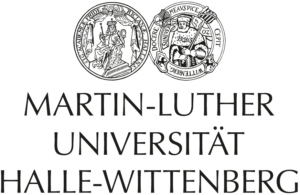Structure and dynamics of long n-alkanes in lipid bilayers
Anika Wurl
and
Oriented crystallization of semiconducting polymers in thin films
Robert Kahl
Location: zoom
Time: 15.20 – 17.00
Chair: Louis
Structure and dynamics of long n-alkanes in lipid bilayers
by Anika Wurl
Contrary to shorter n-alkanes, the mixing of long alkanes (20 carbons and up) with lipid bilayers has not yet been studied in detail. However, such systems are a convenient starting point for trying to understand the interactions between purely hydrophobic polymer chains and cell membranes, for which there is a wide range of applications and also environmental concerns.
This project combines various solid-state NMR techniques with DSC, X-ray scattering and MD simulations in order to systematically study the molecular structure and dynamics of PC lipids and n-alkanes in mixtures of different compositions. Results showed that miscibility and morphology are strongly dependent on the degree of hydration. For example, at reduced hydration, incorporation of n-alkanes into lipid bilayers was possible, the maximum amount miscible depending on the chain lengths of the different molecules. In such cases, incorporation prevented alkanes from crystallizing.
Oriented crystallization of semiconducting polymers in thin films
by Robert Kahl
Driven by the growing demand for renewable energy sources, organic photovoltaics have become a field of significant scientific interest, promising to provide a cost efficient alternative to silicon based solar cells. Typically, organic photovoltaics are based on thin films of semiconducting polymers. As the conductivity in semiconducting polymers is anisotropic, the orientation of the crystals in these thin films has a significant influence on the device performance. Therefore, the aim of this project is to study the mechanisms that control crystal orientation of semiconducting polymer in thin films and find approaches to manipulate the crystal orientation. As was shown in previous studies [1], for the model polymer Poly(3-hexylthiophene) (P3HT), the interface to vacuum gives rise to an undesired orientation of crystals, which seems to be promoted by the hexyl side-chain of P3HT [2]. Therefore, we aim to influence the orientation at this interface by modifying the side-chain of P3HT. Thin films of these P3HT derivatives are studied with the help of GIWAXS, XRR and AFM.
[1] J. Balko et al. „Surface induced orientation and vertically layered morphology in thin films of poly(3-hexylthiophene) crystallized from the melt“, J. Mat. Res., Vol. 32, Nr. 10 (2017), pp. 1957–1968.
[2] B. M. Ocko et al. „Surface freezing in chain molecules: Normal alkanes”, Phys. Rev. E, Vol. 55, Nr. 3 (1997), pp. 3164–3182.




